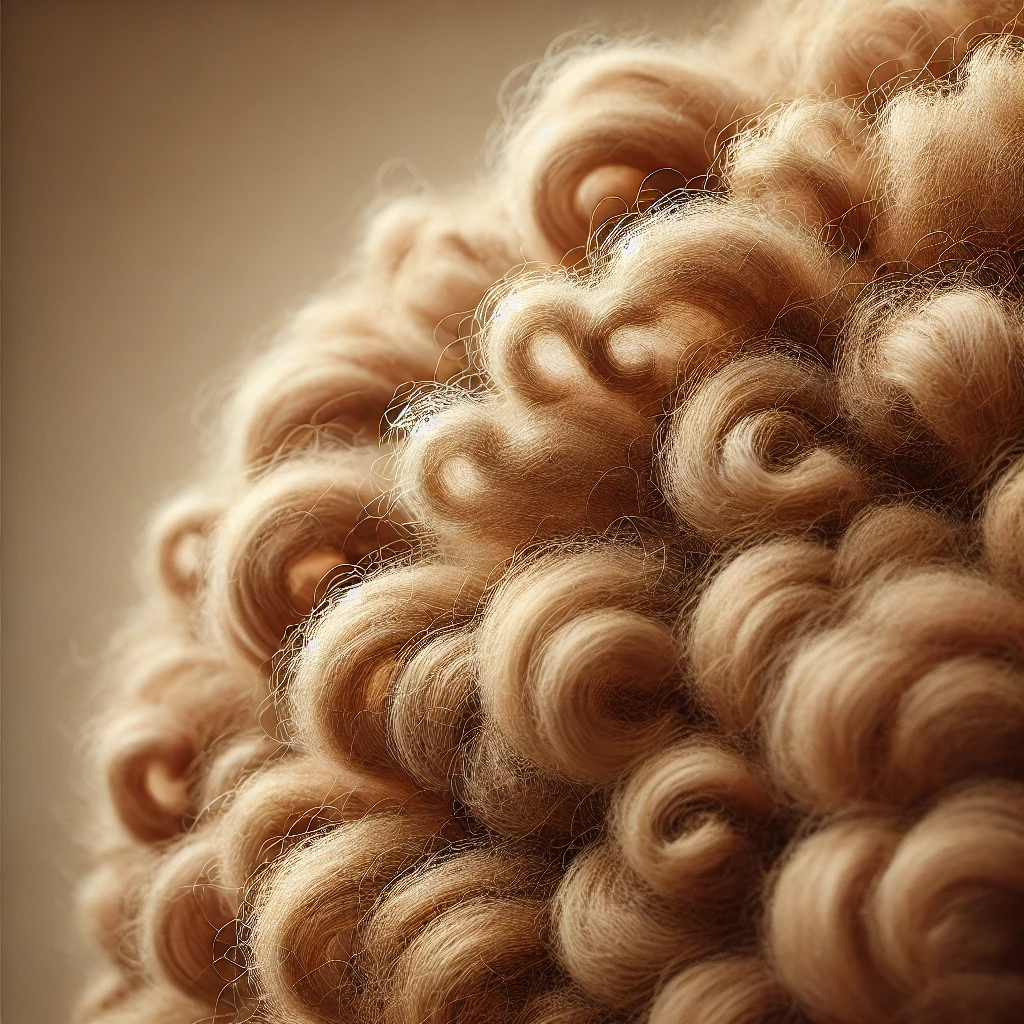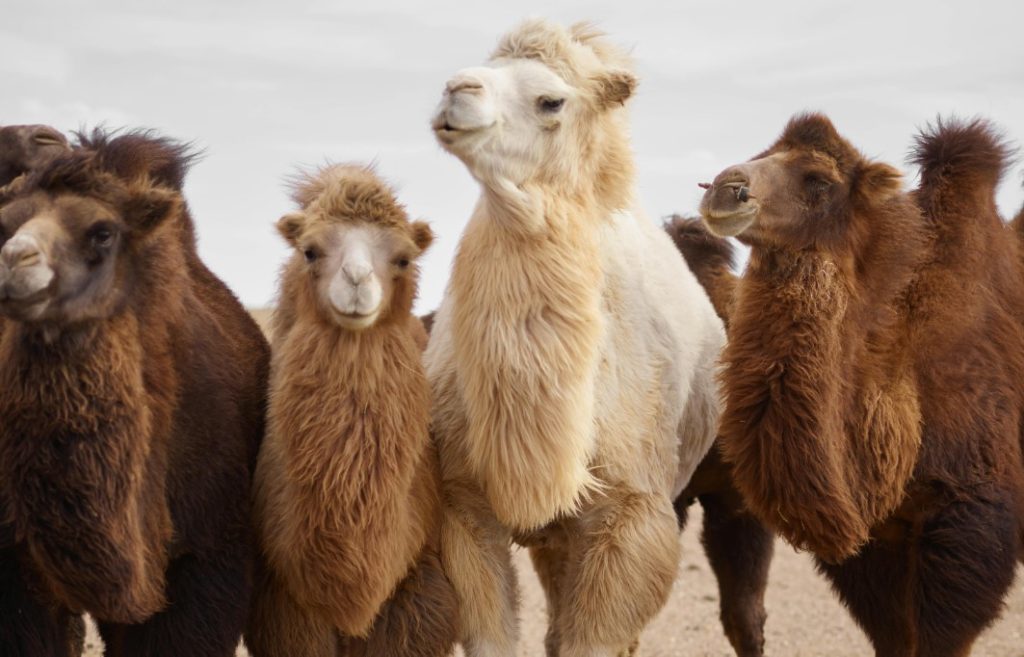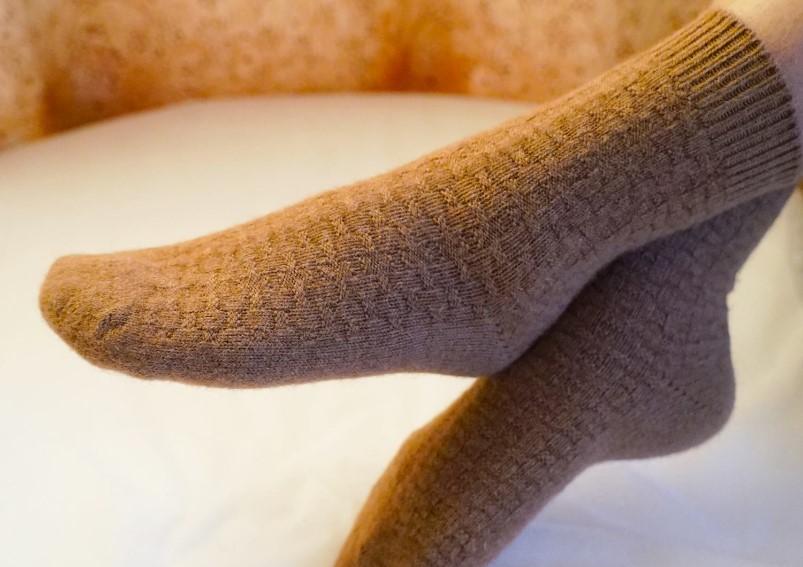Have you ever wondered why camel wool is increasingly becoming a material of choice for high-quality clothing and home décor? Perhaps it has something to do with the softness of camel wool, but is it really soft?
In short, yes, camel wool is very soft, but let’s delve deeper into why and what makes camel wool so soft!
Read More: Mongolian Socks Sale | Camel Socks
Qualities That Make Soft Camel Wool

The texture of camel wool is remarkably gentle, caressing your skin with a plush, soothing feeling that radiates luxury and comfort. But why is camel wool so soft?
How Soft is Camel Wool?
The extraordinary softness of camel wool comes from the ultra-fine fibers of the camel’s undercoat. Each strand is thinner than human hair, giving the wool an almost cloud-like feel against the skin. These fibers, when spun into yarn and woven into the fabric, result in a material that is incredibly soft, giving a plush and comfortable feel.
Factors Influencing the Softness of Camel Wool
However, it’s important to note that the softness of camel wool can be influenced by several factors. For one, the age and species of the camel can play a role. Younger camels, or those of certain species, often produce softer wool.
Secondly, the climate conditions where the camel lives can affect the texture of the wool. Camels living in harsh, cold environments tend to produce a softer, denser coat to better insulate themselves.
Finally, the processing of the wool after collection can significantly impact its final softness. Proper cleaning, carding, and spinning methods can enhance the natural softness of the wool, while harsh or improper processing might lead to a coarser final product.
Comparing Camel Wool Softness

To fully appreciate the value of camel wool, it’s useful to compare it with other common types of fabric, including synthetic material, sheep wool, and cashmere.
Camel Wool vs Synthetic Material
Synthetic materials, such as polyester and nylon, are common due to their durability and affordability. However, when it comes to comfort and sustainability, camel wool far outshines them.
Camel wool is naturally breathable and moisture-wicking, allowing for superior comfort in both hot and cold weather. In contrast, synthetic materials tend to trap heat and moisture, leading to discomfort and perspiration.
Camel Wool vs. Sheep Wool
While both are natural and provide warmth, camel wool is generally considered superior to sheep wool. It’s lighter, softer, and offers better thermal insulation.
Sheep wool can sometimes feel scratchy against the skin, whereas camel wool is known for its smooth, plush texture. Moreover, camel wool is hypoallergenic, making it a more suitable choice for people with sensitive skin or wool allergies.
Camel Wool vs. Cashmere
Cashmere, derived from the fine undercoat of cashmere goats, is one of the softest and most luxurious types of wool. While camel wool and cashmere share many properties, including softness and warmth, there are still distinct differences.
Camel wool is more resilient and durable than cashmere, offering better resistance to pilling and wear. It also excels in thermal regulation, providing warmth without overheating, a feature especially valuable in fluctuating climates. However, cashmere does feel softer on the skin from my experience.
Maintaining Camel Wool Softness

Like any premium material, it requires proper care to maintain its superior quality over time. Here are some tips on how to take care of your camel wool products to ensure they remain as soft and luxurious as when you first got them.
Proper Washing Techniques
One of the keys to preserving the softness of camel wool is the right washing technique.
Hand Wash for Delicate Items
Hand washing is the safest method for cleaning camel wool items. Fill a basin with cold to lukewarm water and add a mild wool-safe detergent. Immerse the camel wool item, gently agitate the water, and let it soak for about 15 minutes. Rinse thoroughly with clean water, ensuring all the soap is removed. Never wring or twisting the wool as it can distort its shape and damage the fibers.
Machine Wash on Gentle Cycle
If the label on your camel wool product allows for machine washing, use a gentle cycle with cold water. Be sure to use a wool-safe detergent and put the item in a mesh laundry bag for extra protection.
Drying Camel Wool
After washing, lay the camel wool item flat on a clean towel. Roll the towel and the item together to gently squeeze out excess water. Unroll the towel and reshape the wool product on a dry towel, allowing it to air dry naturally away from direct heat or sunlight.
Storage
Proper storage of camel wool items is crucial to maintaining their softness. Always store your camel wool products in a cool, dry place, preferably in a breathable fabric bag to protect them from dust and moths. Avoid folding or creasing camel wool garments for long periods, as this can cause fibers to break and the fabric to lose its softness.
Brushing
Camel wool can benefit from occasional brushing using a soft-bristle brush. This can help maintain its softness by removing any small particles that might have become lodged in the fibers, while also keeping the fibers fluffed and plush.
Avoid High Heat and Chemicals
High heat can damage the delicate fibers of camel wool, reducing its softness. Therefore, avoid hot water, high-heat drying, and ironing. Also, harsh chemicals, including bleach or strong detergents, can degrade the fibers and should be avoided.
Final Thoughts
In conclusion, camel wool proves itself to be more than just another textile in the market. It holds a unique place in the world of natural fibers, courtesy of its unrivaled softness, unparalleled thermal insulation, and its eco-friendly nature.
Comparing it with other materials, such as synthetic fibers, sheep wool, or cashmere, highlights camel wool’s distinguished attributes, establishing it as a supreme choice for those seeking both comfort and luxury. And while this magnificent fabric requires a little extra care, the resulting longevity, and sustained softness make it well worth the effort.

